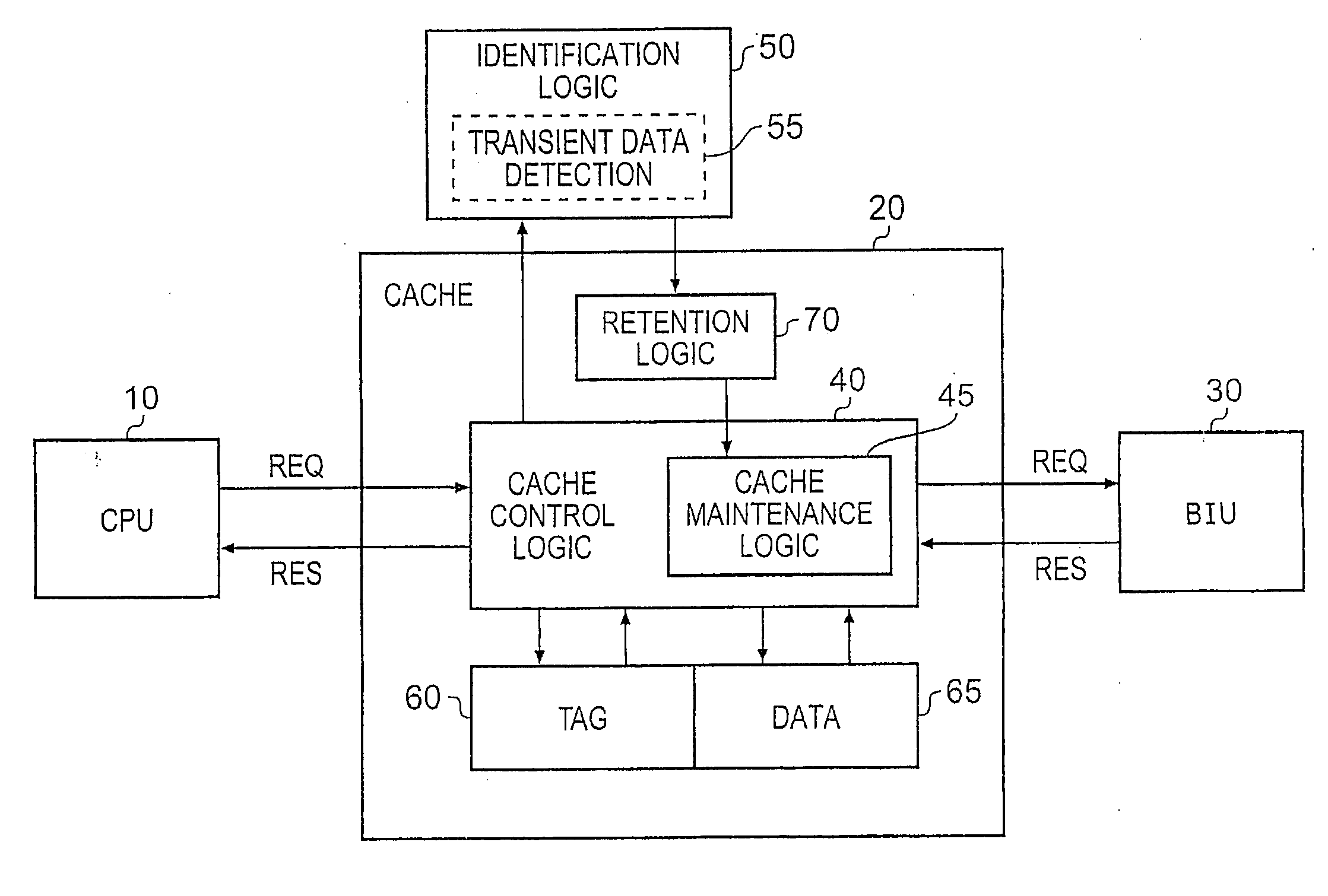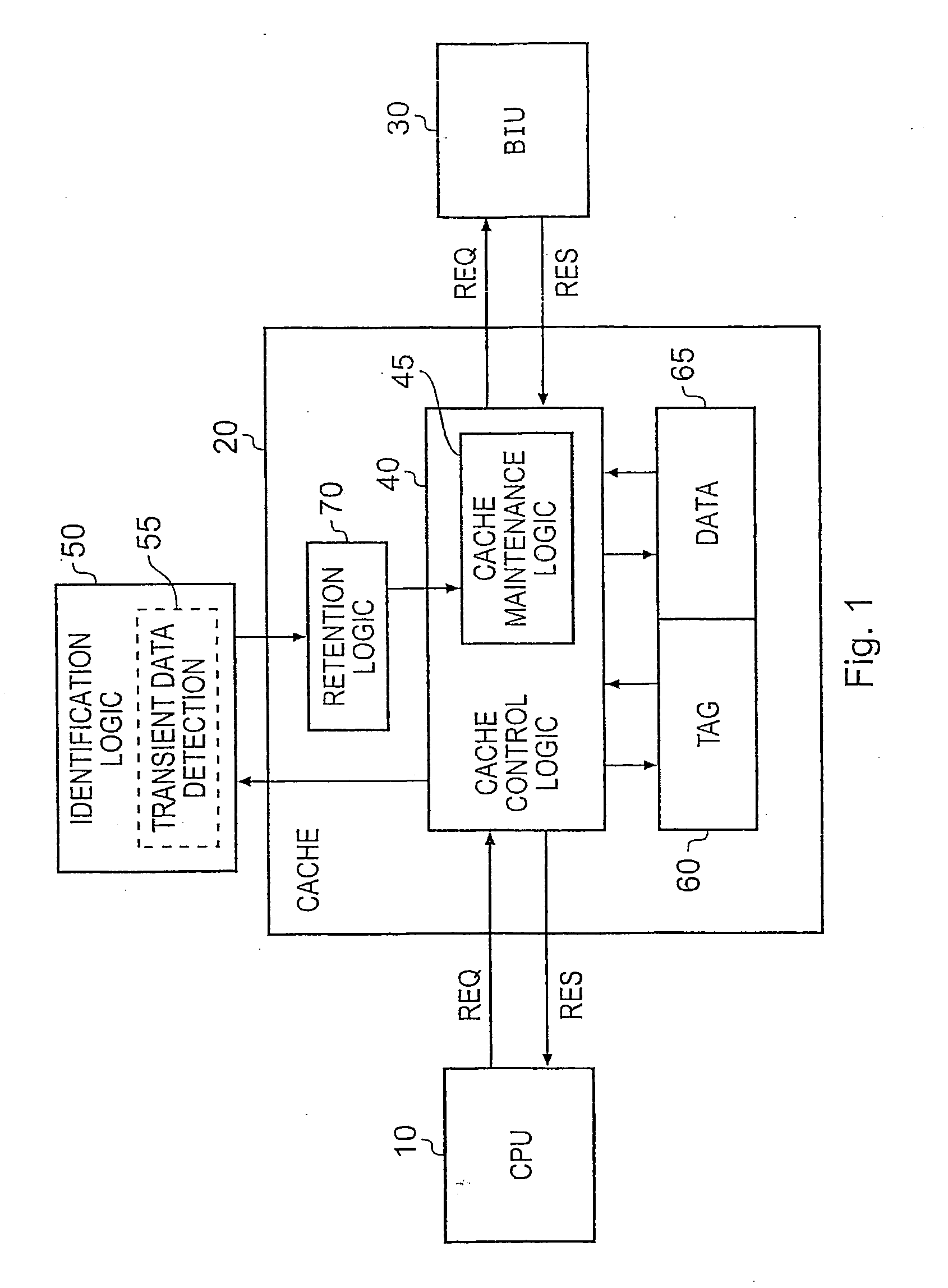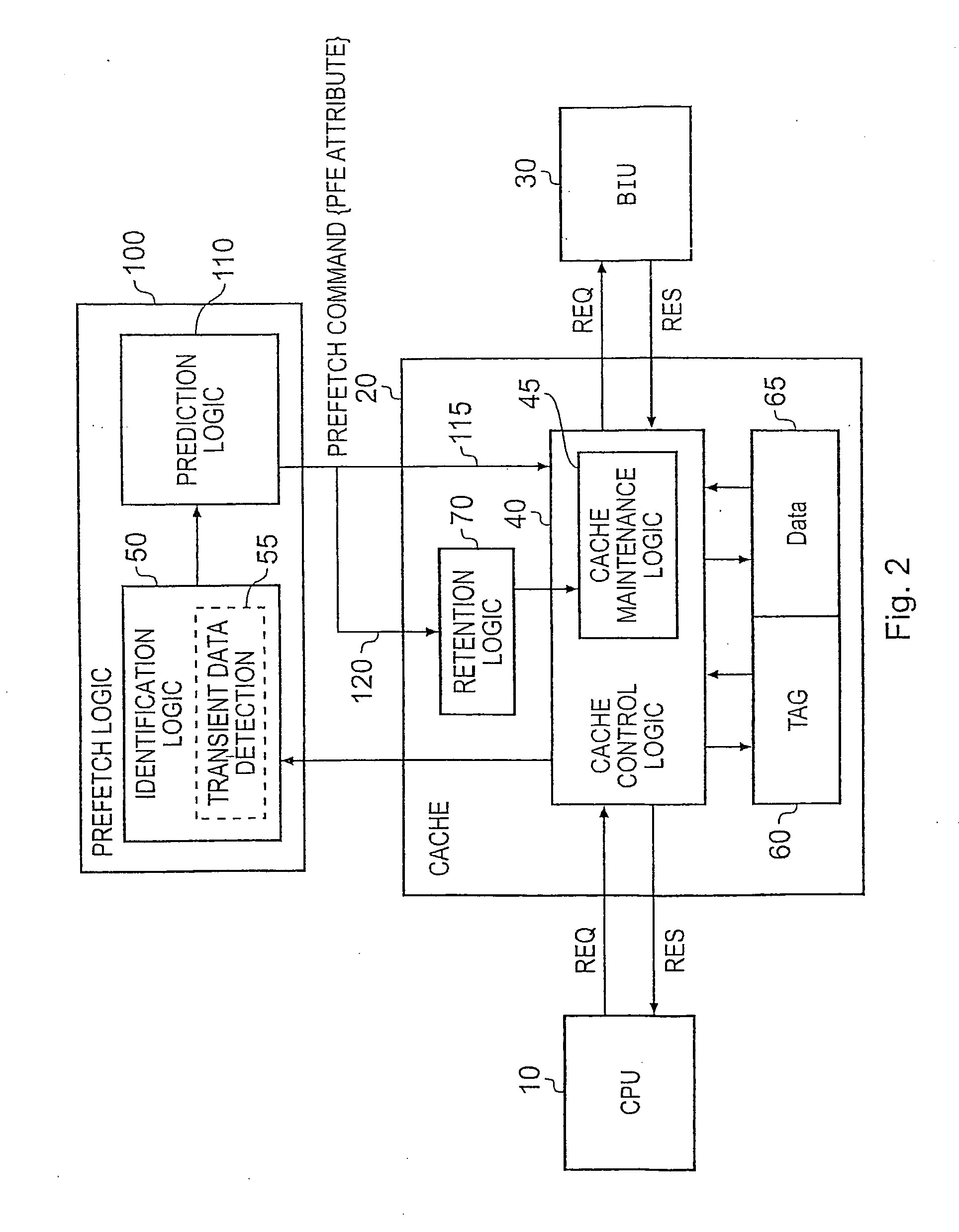Cache Management Within A Data Processing Apparatus
a data processing apparatus and cache technology, applied in the direction of electric digital data processing, memory systems, instruments, etc., can solve the problems of significant amount of memory traffic, inability to meet the needs of data eviction, and the pipeline of associated processing units to back up or stall in the process, so as to reduce the cost of evicting data values to a lower memory level in the hierarchy, reduce energy and performance costs, and reduce the impact of the cache lin
- Summary
- Abstract
- Description
- Claims
- Application Information
AI Technical Summary
Benefits of technology
Problems solved by technology
Method used
Image
Examples
Embodiment Construction
[0061]FIG. 1 is a block diagram of a data processing apparatus in accordance with a first embodiment of the present invention. This first embodiment is a uni-processor embodiment in which a single CPU 10 has an associated cache 20 operable for storing data values for access by the CPU 10. When the CPU 10 wishes to access a data value, it issues an access request to the cache control logic 40. For a write access, this access request will also be accompanied by a write data value. The cache control logic 40 will then perform a lookup in the tag portion 60 of the cache 20 in order to determine whether a tag portion of the address specified in the access request matches a tag value stored in the tag portion 60 of the cache. If so, the corresponding data value is accessed in the data portion 65 of the cache 20. In the event of a write operation, this will cause the write data value to be stored in the relevant cache line of the data portion 65 with an acknowledgement signal being issued ...
PUM
 Login to View More
Login to View More Abstract
Description
Claims
Application Information
 Login to View More
Login to View More - R&D
- Intellectual Property
- Life Sciences
- Materials
- Tech Scout
- Unparalleled Data Quality
- Higher Quality Content
- 60% Fewer Hallucinations
Browse by: Latest US Patents, China's latest patents, Technical Efficacy Thesaurus, Application Domain, Technology Topic, Popular Technical Reports.
© 2025 PatSnap. All rights reserved.Legal|Privacy policy|Modern Slavery Act Transparency Statement|Sitemap|About US| Contact US: help@patsnap.com



